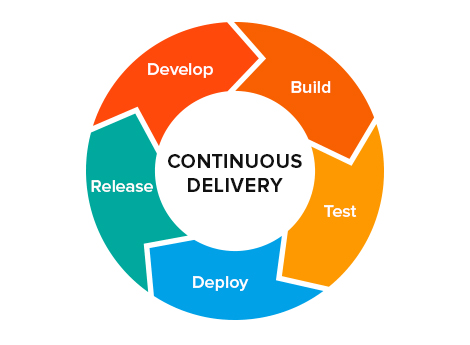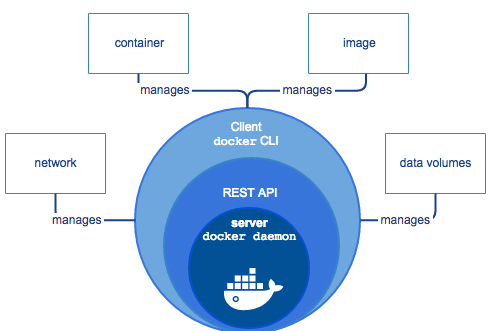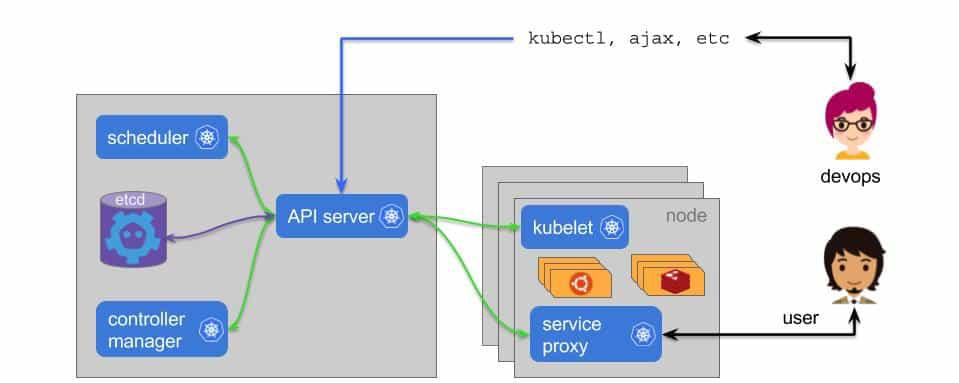
0
+
Google Reviews

0
+
Devops has proved to be a great tool to put your company on the fastest growth path. Thus everyone as stakeholder of the software development life cycle should learn DevOps, namely,
a. Developers,
b. Testing professionals.
c. Solution Architects,
d. System administrator,
e. Release engineers,
f. Cloud professionals


Technical benefits: a. Continuous software delivery b. Less complex problems to fix c. Faster resolution of problems
Business benefits: d. Faster delivery of features. Quick to market e. More stable operating environments f. More time available to add value (rather than fix/maintain). Accelerates innovation.






Introduction to DevOps :
DevOps Concepts:
How to choose the right DevOps tools
Devops Course Content
Linux Basics
a.Working knowledge of Linux
b.How to navigate through major Linux distributions?
c.System configurations and graphical interface of Linux
d.Basic command line operations
e.Common applications of Linux
AWS Basics
a.What is Cloud?
b.What is AWS?
c.Why Cloud is required for DevOps?
d.How to provision Server- EC2?
e.How to connect the Servers and install DevOps Tools?
Terraform
HashiCorp Terraform enables you to safely and predictably create, change, and improve infrastructure. It is an open source tool that codifies APIs into declarative configuration files that can be shared amongst team members, treated as code, edited, reviewed, and versioned.
Introduction to Terraform , Scripting , Configuration Management , Integration with Azure
Hands-on Exercise – Script for server provisioning, Cluster management
 |
Git(Source Control)
Git is a free, open source distributed version control system tool designed to handle everything from small to very large projects with speed and efficiency. It was created by Linus Torvalds in 2005 to develop Linux Kernel. Git has the functionality, performance, security and flexibility that most teams and individual developers need.
Concepts of Version Control Systems, Git as SCM, Git Command Line, Git setup with CI tool Jenkins, Trunk based approach for
Hands-on Exercise – Create a git project, Checkout a branch, Create a file and add to git, Edit file, Commit the code, Set up Jenkins and integrate with Git
 |
Maven
Maven is a build automation tool used primarily for Java projects. Maven addresses two aspects of building software: first, it describes how software is built, and second, it describes its dependencies.
 |
Ansible
Ansible is the simplest way to automate apps and IT infrastructure. Application Deployment Configuration Management + Continuous Delivery.
I.Inventory. The “inventory” is a configuration file where you define the host information.
II.Playbooks. In most cases – especially in enterprise environments – you should use Ansible playbooks.
III.Plays. Playbooks contain plays. …
IV.Tasks. …
V.Roles. …
VI.Handlers. …
VII.Templates. …
VIII.Variables.
Introduction to Ansible,Configuration,Writing Ansible Playbooks, Ansible based Configuration Management,Different Roles and Command Line usage.
Hands-on Exercise – Write Ansible playbook, Assign different roles in configuration tool
Puppet
Puppet is an open source systems management tool for centralizing and automating configuration management. Configuration management is the detailed recording and updating of information that describes an enterprise’s hardware and software. A look under the hood. Puppet Enterprise is built on the world’s most proven and widely adopted configuration management platform. …
a.Puppet Language. …
b.Puppet Server. …
c.PuppetDB. …
d.Facter. …
e.Hiera
 |
Jenkins (Automating Build and Test )
Continuous Integration and Continuous Delivery. As an extensible automation server, Jenkins can be used as a simple CI server or turned into the continuous delivery hub for any project.
a.Pipeline
b.Easy Installation
c.Easy Upgrades
d.Scriptability
e.View Filters
f.Amazon EC2
g.HTML Publisher
h.Throttle Builds
i.Join
j.Green Balls
Automating Builds with Maven and Ant, Building Delivery Pipeline in Jenkins (CI/CD), Test Automation, Security, Notification System in Jenkins
Hands-on Exercise – Create a Maven Project, Edit pom.xml file to install a version of junit, Set up build delivery pipeline, Set up notification alerts in Jenkins, Configure test plan in Jenkins
 |
Docker
Docker is a tool designed to make it easier to create, deploy, and run applications by using containers. Containers allow a developer to package up an application with all of the parts it needs, such as libraries and other dependencies, and ship it all out as one package. In a way, Docker is a bit like a virtual machine. But unlike a virtual machine, rather than creating a whole virtual operating system, Docker allows applications to use the same Linux kernel as the system that they’re running on and only requires applications be shipped with things not already running on the host computer. This gives a significant performance boost and reduces the size of the application.
 |
Docker Container Management
What are Containers, Difference between VM and Container, Docker Fundamentals, Creating & Running Docker Images, Image Distribution, Creating Docker Registry, Compose Scripts, Remote Docker Image
Hands-on Exercise – Configure a Docker, Create an image in Docker and run it
Docker Commands and Best Practices.
Networking concepts in Docker, Using Docker Volume and Creation of a Dockerfile, a text file to contain the commands to create an image
Hands-on Exercise – Create a dockerfile with the commands to create an image, Create the image
Kubernetes
Containerization with Kubernetes
Kubernetes is an open-source system for automating deployment, scaling, and management of containerized applications.
Kubernetes (aka k8s) is an open source orchestrator, donated to the community by Google, who has been using it internally for many years. It has become the de facto standard for container scheduling, and can scale up to the biggest deployments or down to a cluster of Raspberry Pi boards.
Introduction to Kubernetes, the cluster architecture of Kubernetes, creating a Kubernetes cluster, what is YAML, creating YAML with Kubernetes deployment, Kubernetes service, dashboard installation, Kubernetes rolling updates, using an app with the dashboard.
 |
Jira
Plan, track, and manage your agile and software development projects in Jira. Customize your workflow, collaborate, and release great software.
a.Process
b.Versions
c.Labels
Nagios
Performance and Automated Monitoring
Nagios provides enterprise-class Open Source IT monitoring, network monitoring, server and applications monitoring
a.Monitoring
b.Response
c.Maintenance
Introduction of Nagios, Nagios Setup, Commands, Objects, notifications, Configure Nagios to monitor webserver, Load Balancer (HAProxy, NginX), + Project 1 & project 2
Hands-on Exercise – Perform Nagios and Netdata monitoring, Monitor the performance with Grafana, Setup Syslog and verify the logs are getting generated, Configure HAProxy server
Continuous Integration (CI)
Frequent merge of code to a shared repository after which automated builds and tests are run using Jenkins
Hands-on Exercise – Commit code and check if Jenkins runs the build scripts and tests the code using automation script
Agile Process & Other Tools
Devops insync with Agile
PagerDuty Alerting tool
Jira Project Management Tool
Slack – Continuous communication tool
Audience for this course
Ops has proved to be a great tool to put your company on the fastest growth path. Thus everyone as stakeholder of the software development life cycle should learn DevOps, namely,
a. Developers,
b. Testing professionals.
c. Solution Architects,
d. System administrator,
e. Release engineers,
f. Cloud professionals
Outline for this course
+91 8882400500




I had undergone oracle DBA course under Chetan sir's Guidance an it was a very good learning experience overall since they not only provide us with theoretical knowledge but also conduct lot of practical sessions which are really fruitful and also the way of teaching is very fine clear and crisp which is easier to understand, overall I had a great time for around 2 months, they really train you well.also make it a point to clear all your doubts and provide you with clear and in-depth concepts hence hope to join sometime again
I have completed Oracle DBA 11g from Radical technology pune. Excellent trainer (chetna gupta). The trainer kept the energy level up and kept us interested throughout. Very practical, hands on experience. Gave us real-time examples, excellent tips and hints. It was a great experience with Radical technologies.
Linux learning with Anand sir is truly different experience... I don't have any idea about Linux and system but Anand sir taught with scratch...He has a great knowledge and the best trainer...he can solve all your queries related to Linux in very simple way and giving nice examples... 100 to Anand Sir.
I had a wonderful experience in Radical technologies where i did training in Hadoop development under the guidance of Shanit Sir. He started from the very basic and covered and shared everything he knew in this field. He was brilliant and had a lot of experience in this field. We did hands on for every topic we covered, and that's the most important thing because honestly theoretical knowledge cannot land you a job.
I have recently completed Linux course under Anand Sir and can assuredly say that it is definitely the best Linux course in Pune. Since most of the Linux courses from other sources are strictly focused on clearing the certification, they will not provide an insight into real-world server administration, but that is not the case with Anand Sir's course. Anand Sir being an experienced IT infrastructure professional has an excellent understanding of how a data center works and all these information is seamlessly integrated into his classes.
1. Basic user account management (creating, modifying, and deleting users).
2. Password resets and account unlocks.
3. Basic file system navigation and management (creating, deleting, and modifying files and directories).
4. Basic troubleshooting of network connectivity issues.
5. Basic software installation and package management (installing and updating software packages).
6. Viewing system logs and checking for errors or warnings.
7. Running basic system health checks (CPU, memory, disk space).
8. Restarting services or daemons.
9. Monitoring system performance using basic tools (top, df, free).
10. Running basic commands to gather system information (uname, hostname, ifconfig).
1. Intermediate user account management (setting permissions, managing groups).
2. Configuring network interfaces and troubleshooting network connectivity issues.
3. Managing file system permissions and access control lists (ACLs).
4. Performing backups and restores of files and directories.
5. Installing and configuring system monitoring tools (Nagios, Zabbix).
6. Analyzing system logs for troubleshooting purposes.
7. Configuring and managing software repositories.
8. Configuring and managing system services (systemd, init.d).
9. Performing system updates and patch management.
10. Monitoring and managing system resources (CPU, memory, disk I/O).
1. Advanced user account management (LDAP integration, single sign-on).
2. Configuring and managing network services (DNS, DHCP, LDAP).
3. Configuring and managing storage solutions (RAID, LVM, NFS).
4. Implementing and managing security policies (firewall rules, SELinux).
5. Implementing and managing system backups and disaster recovery plans.
6. Configuring and managing virtualization platforms (KVM, VMware).
7. Performance tuning and optimization of system resources.
8. Implementing and managing high availability solutions (clustering, load balancing).
9. Automating system administration tasks using scripting (Bash, Python).
10. Managing system configurations using configuration management tools (Ansible, Puppet).
1. Learning basic shell scripting for automation tasks. 2. Understanding file system permissions and ownership. 3. Learning basic networking concepts (IP addressing, routing). 4. Learning how to use package management tools effectively. 5. Familiarizing with common Linux commands and utilities. 6. Understanding basic system architecture and components. 7. Learning basic troubleshooting techniques and methodologies. 8. Familiarizing with basic security principles and best practices. 9. Learning how to interpret system logs and diagnostic output. 10. Understanding the role and importance of system backups and restores.
1. Advanced scripting and automation techniques (error handling, loops).
2. Understanding advanced networking concepts (VLANs, subnetting).
3. Familiarizing with advanced storage technologies (SAN, NAS).
4. Learning advanced security concepts and techniques (encryption, PKI).
5. Understanding advanced system performance tuning techniques.
6. Learning advanced troubleshooting methodologies (root cause analysis).
7. Implementing and managing virtualization and cloud technologies.
8. Configuring and managing advanced network services (VPN, IDS/IPS).
9. Implementing and managing containerization technologies (Docker, Kubernetes).
10. Understanding enterprise-level IT governance and compliance requirements.
1. Designing and implementing complex IT infrastructure solutions. 2. Architecting and implementing highly available and scalable systems. 3. Developing and implementing disaster recovery and business continuity plans. 4. Conducting security audits and vulnerability assessments. 5. Implementing and managing advanced monitoring and alerting systems. 6. Developing custom automation solutions tailored to specific business needs. 7. Providing leadership and mentorship to junior team members. 8. Collaborating with other IT teams on cross-functional projects. 9. Evaluating new technologies and making recommendations for adoption. 10. Participating in industry conferences, workshops, and training programs.
Abu Dhabi
Abu Dhabi
Abu Dhabi
Abu Dhabi
Abu Dhabi
Abu Dhabi
Abu Dhabi
Abu Dhabi
Abu Dhabi
Abu Dhabi
Abu Dhabi
Abu Dhabi
Abu Dhabi
Abu Dhabi
Abu Dhabi
Abu Dhabi
Abu Dhabi
Abu Dhabi
Abu Dhabi
Abu Dhabi
Abu Dhabi
Abu Dhabi
Abu Dhabi
Abu Dhabi
Abu Dhabi
Abu Dhabi
Abu Dhabi
Abu Dhabi
Abu Dhabi
Abu Dhabi
Abu Dhabi
Abu Dhabi
Abu Dhabi
Abu Dhabi
Abu Dhabi
Abu Dhabi
Abu Dhabi
Abu Dhabi
Abu Dhabi
Abu Dhabi







(Our Team will call you to discuss the Fees)


(Our Team will call you to discuss the Fees)